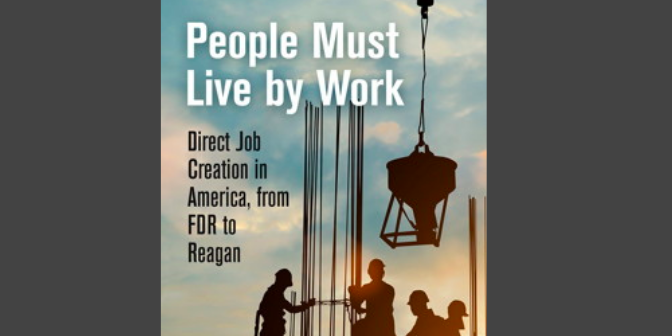By Steven Attewell
This Labor Day, many people no doubt gave thanks for the low unemployment rate (while perhaps bemoaning wages that aren’t keeping up with inflation). Yet at the same time, at many Democratic Party Labor Day BBQs, presidential candidates and other elected and activists touted proposals for a job guarantee to ensure full employment.
What explains this seeming contradiction? Part of it is that low unemployment doesn’t seem to be resulting in the wage gains that it used to. Part of it is that progressives want to be prepared for the next recession, so that we don’t have to wait years and years for full recovery. Part of it is that progressives want some way to appeal to working class white voters without throwing people of color under the bus.
This sudden flood of proposals on job guarantees has provoked a lively discussion on the merits of these proposals. One of the common refrains in this debate is a skepticism about whether the Federal government could employ so many people so soon.
As the author of People Must Live By Work, which studies the development of direct job creation programs from the New Deal to the rise of Reagan, I find this last argument a bit surprising. More than eighty years ago, when the Federal government was a fraction of its current size and income, and when the most advanced administrative technology was the carbon copy and the rotary phone, the Civil Works Administration put 4.26 million people to work in under three months.
In this narrative, direct job creation emerges not just as an emergency response to the Great Depression, but as the New Deal’s signature economic policy — the Committee on Economic Security that designed the Social Security system envisioned direct job creation working to cover the other half of Americans who weren’t initially covered by Old Age or Unemployment Insurance; for two presidential terms, more than five percent of the American workforce were employed directly by a host of New Deal programs; and planners from no less than four agencies envisioned creating permanent direct job creation systems to help American veterans returning from WWII.
However, DJC was abandoned after WWII, leaving a gaping hole in the American safety net. And while you might expect that this was because of conservative rollbacks of the New Deal order, in my book I show how the key decisions to sideline DJC were taken by liberals in 1945-6 during the drafting of the Employment Act, in 1964 during the first task force meetings that determined the scope of the War on Poverty, and in 1978 when Congress and the Carter Administration negotiated over the Humphrey-Hawkins Act. And the result of this decision by liberals to abandon their own traditions was the 1980 recession and the election of Ronald Reagan.
So when we see Democrats debating the merits of a job guarantee, we should remember that we know what happened when the naysayers won the argument last time; when people loudly doubt whether the Federal government could put the unemployed to work, we should remember that it already did.
Steven Attewell is an adjunct professor at SLU.



